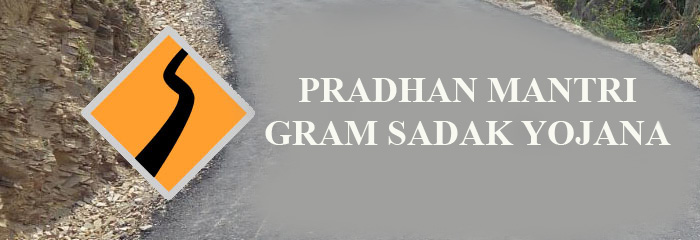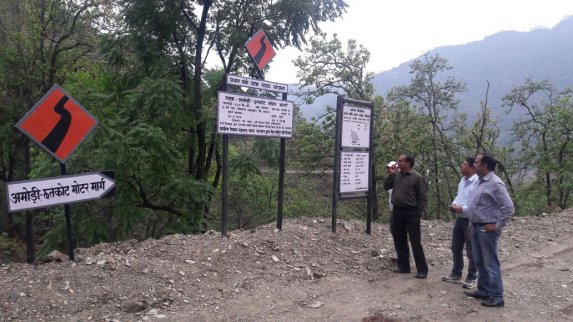- Skip to main content
- Skip to navigation
- Screen Reader Access
- Text Size
- Select Theme Default Theme Yellow Theme Pink Theme Blue Theme
- हिंदी मे

Photo Gallery
- Home
- About Us
About PMGSY
CURRENT PLANS FOR RURAL CONNECTIVITY: PMGSY
1 .PMGSY: Programme Goals-
Rural Road connectivity is a key component of rural development by promoting access to economic and social services and thereby generating increased agricultural incomes and productive employment opportunities. It is also a key ingredient in ensuring poverty reduction.
It was against this background of poor connectivity that the Prime Minister announced in 2000, a massive rural roads programme. The Prime Minister's Rural Road Programme (Pradhan Mantri Gram Sadak Yojana, PMGSY) set a target of:
(i)- Achieving all-weather road access to every village/habitation with a population greater than 1000 by 2003
(ii)-Providing all-weather road access to all villages/habitations of population greater than 500 people [250 in case of hill States (North-Eastern states, Sikkim, Himachal Pradesh, Jammu & Kashmir and Uttaranchal), the desert areas and tribal areas] by the end of the Tenth Five Year Plan, i.e., 2007
2. Noteworthy Features of the PMGSY
The Ministry of Rural Development (MoRD) has been entrusted with the task of organizing the programme. Some of the noteworthy features of the programme are:
(i)-Full Central funding, with 50% of the cess on High Speed Diesel being earmarked for this programme.
(ii)-Preparation of Master Plans and Core Network for Rural Roads for all the Districts and Blocks, identifying the unconnected habitations and proposing the most cost-effective routes for the purpose.
(iii)-Design and Specifications as contained in the Rural Roads Manual (RRM, IRC SP:20), published by the Indian Roads Congress (IRC).
(iv)-Appointment of a dedicated State Level Agency in all States with overall responsibility for rural road planning, programme execution and management.
(v)-Appointment of programme implementing agencies, by all States, typically Public Works Departments (PWDs) or Rural Engineering Organizations (REOs).
(vi)-Independent State Technical Agencies (STA) commissioned by MoRD to vet designs and estimates.
(vii)-Use of competitive tendering by the implementing agencies of all works on the basis of a Standard Bidding Document (SBD).
(viii)-Execution of the works within a period of 9-12 months.
(ix)-A Defects Liability and maintenance period of 5 years specified in the Contracts for the roads constructed under the programme, with funds for maintenance being provided by the States.
(x)-A Central on-line web-based financial and project monitoring system.
(xi)-A 3-Tier Quality Management System.
(xii)-Operational management at Central level by the National Rural Roads Development Agency (NRRDA).
Right Menu
External Links
Downloads
Circular 07.05.13 Single Bid and Committee Restructuring under PMGSY
PBMC ARTICAL IS PUBLISHED IN INDIAN HIGHWAYS ,FEB 2017 -TECHNICAL PAPER BY ER A K DINKAR
Hit Counter0000412547Since: 27-10-2015




